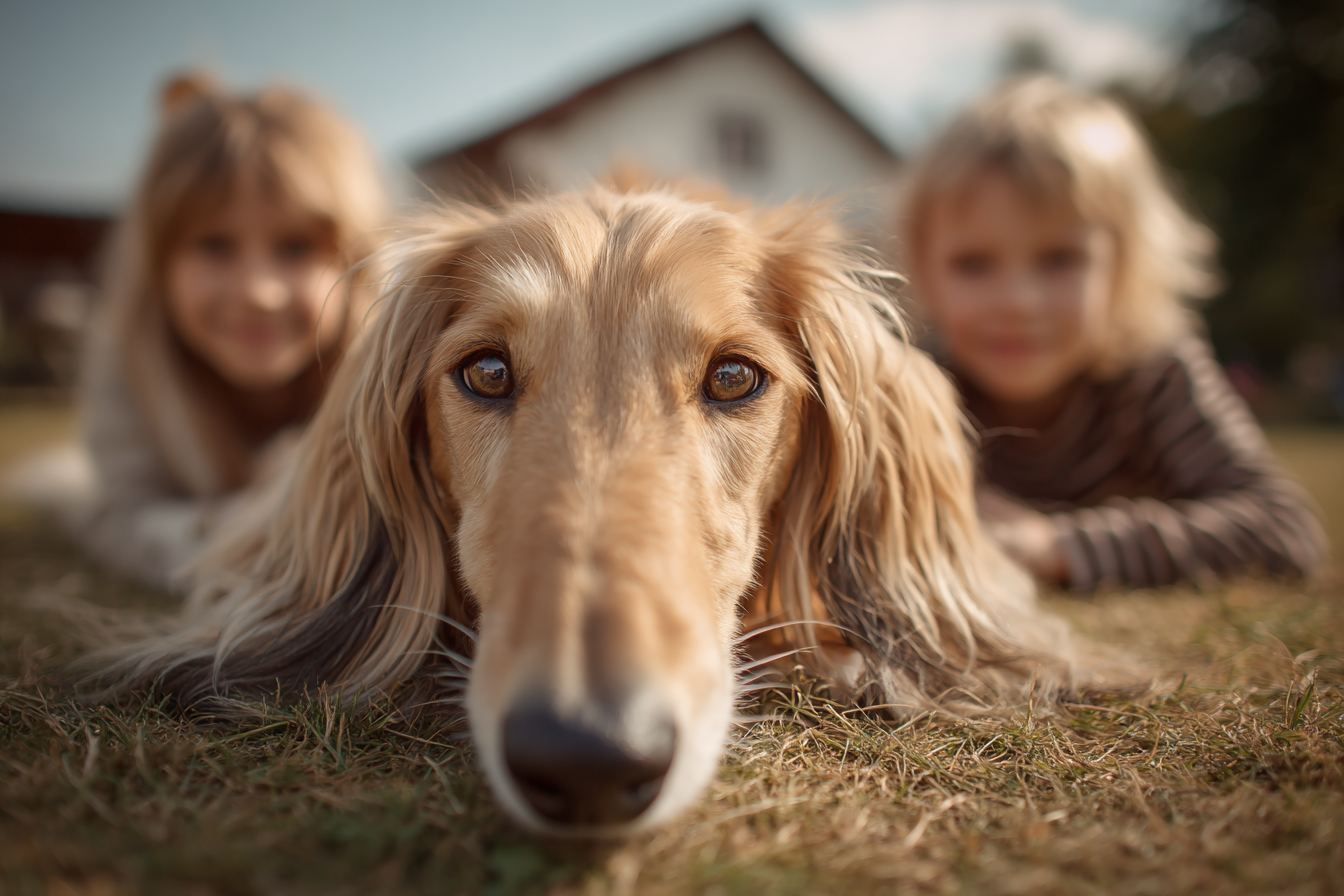Salukis are known for their graceful appearance, gentle nature, and keen intelligence. When it comes to living with children, understanding how these elegant dogs interact with younger family members is crucial for a happy and safe home environment. This article delves into the typical behavior of Salukis around children and offers practical tips to foster a strong and positive relationship between the two. Whether you’re a Saluki owner or considering bringing one into a family with kids, learning these insights can help create a harmonious household for everyone involved.
Typical Saluki Behavior Around Children
Salukis are a unique breed with specific behavioral traits that influence how they interact with children. Generally, they are gentle, affectionate, and somewhat reserved dogs who prefer calm and quiet environments. Unlike more boisterous breeds, Salukis are not typically hyperactive or overly playful, but they do enjoy moderate playtime and companionship.
These dogs tend to be very loyal to their families and can form strong bonds with children, especially if introduced properly. However, because of their sensitive nature, Salukis may shy away from loud noises, sudden movements, or overly rambunctious play. They are less likely to engage in roughhousing, preferring instead to be quietly near children, enjoying gentle petting or light games.
Overall, Salukis can be excellent companions for kids who understand how to approach dogs respectfully. Their calm demeanor makes them well-suited for families with older children who can interact thoughtfully rather than young toddlers who may accidentally overwhelm the dog.
Safety and Supervision Guidelines
Ensuring safety during interactions between Salukis and children is paramount. While Salukis are generally mild-tempered, any dog can react unpredictably if stressed or provoked. Appropriate supervision helps prevent misunderstandings and keeps interactions positive.
Here are some key safety tips to keep in mind:
- Always supervise playtime: Never leave young children alone with a Saluki, especially if the dog is still adjusting to the household or children’s behavior.
- Set clear boundaries: Teach children to approach the dog calmly and quietly and to avoid sudden movements or loud yelling that could startle the dog.
- Avoid interrupting rest: Salukis value their downtime. Make sure children understand not to disturb the dog when it’s eating, sleeping, or resting in a safe spot.
- Know the dog’s triggers: Pay attention to signs of discomfort or anxiety in your Saluki, and intervene when necessary to prevent negative responses.
By maintaining a watchful eye and educating children about safe behavior, you create a secure environment where both kids and dogs can enjoy each other’s company.
Teaching Children to Respect Dogs
Respectful interaction is the foundation for a positive relationship between children and Salukis. Teaching kids how to behave around dogs is essential for nurturing mutual trust and understanding.
Here are some important lessons to share with children regarding respectful behavior:
- Ask before petting: Encourage children to always ask permission before approaching or touching the dog.
- Approach slowly and gently: Show children how to extend their hand slowly for the dog to sniff and how to pet softly, avoiding sensitive areas like the face or tail.
- Understand dog body language: Teach kids simple cues such as recognizing when a dog is relaxed, happy, or uncomfortable to avoid unwanted interactions.
- No teasing or chasing: Explain that teasing or running after a dog can frighten or stress the animal.
- Respect the dog’s space: Make sure children understand that the dog needs its own quiet space and that it’s okay for the dog to walk away when it wants.
By instilling these values early, children will be more confident and sensitive in their interactions with Salukis and other dogs.
Socialization Techniques
Proper socialization is key to helping a Saluki feel comfortable and relaxed around children of all ages. Starting early and introducing the dog to various environments and people can build positive associations and reduce anxiety.
Effective socialization includes:
- Gradual introductions: Begin by allowing the Saluki to observe children from a distance before close interactions take place.
- Positive reinforcement: Reward calm and friendly behavior with treats, praise, or petting so the dog associates kids with positive experiences.
- Controlled environments: Conduct initial interactions in quiet, familiar spaces to minimize stress for the dog.
- Exposure to different ages and behaviors: Expose the Saluki to children with varying energy levels and communication styles to help the dog learn how to adapt.
Regular, positive exposure makes Salukis more confident and willing to engage with children in a friendly way.
Managing Playtime
While Salukis enjoy play, their style tends to be more elegant and less boisterous compared to some other breeds. Managing playtime correctly means balancing the dog’s natural temperament with children’s energy levels.
Consider these tips for pleasant play sessions:
- Choose gentle games: Encourage games like fetch with soft balls or light tugging with toys rather than rough wrestling or chasing.
- Keep playtime short: Salukis have bursts of energy but also need frequent rest, so plan for multiple short play sessions rather than prolonged activity.
- Monitor energy levels: If the dog shows signs of fatigue or disinterest, give it a break without forcing interaction.
- Provide toys suitable for all: Use toys that are safe and enjoyable for both the Saluki and children to avoid accidental injuries.
By regulating playtime thoughtfully, families can ensure both the dog and kids enjoy their bonding moments comfortably and safely.
Recognizing Signs of Stress or Discomfort
Understanding when a Saluki is stressed or uncomfortable is essential to prevent negative encounters. Salukis tend to be subtle in their body language, so paying close attention is important.
Common signs of stress or discomfort in Salukis include:
- Avoidance behaviors such as turning away, moving away, or hiding
- Raised hackles or stiff body posture
- Yawning, lip licking, or excessive panting unrelated to exercise
- Whining, growling, or snapping if an interaction becomes too much
- Avoiding eye contact or ears pinned back
If you notice these signs during interactions with children, it’s necessary to intervene calmly and give the dog space to relax. Teaching children to recognize these signals can also help prevent stress and foster empathy.
Building a Bond That Lasts
With patience, understanding, and proper guidance, Salukis and children can develop a warm, respectful relationship that enriches the lives of both. Encouraging calm interactions, teaching mutual respect, and creating structured opportunities for socialization and play all contribute to a household where everyone feels safe and happy.
Remember, every Saluki is an individual with its own personality and preferences. Making time to learn about your dog’s unique traits and moods will help you tailor your interactions in ways that are best suited for your family. In doing so, the elegance and loving nature of the Saluki can be a beautiful addition to a child-friendly home.







